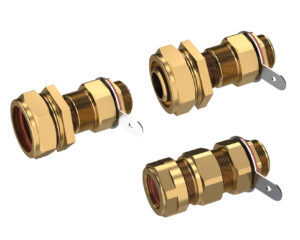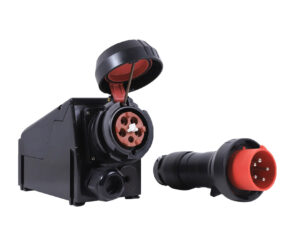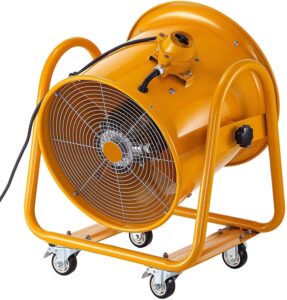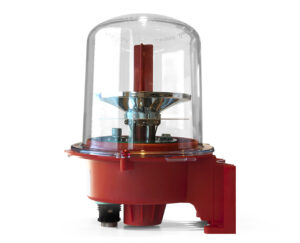Electrical Equipment
Texpa Machinery
Electrical Equipment
1- Electrical Explosion Proof Equipment:
Explosion Proof Equipment are used in different industries such as: oil, gas and petrochemical, alcohol factories and mines which are susceptible for explosion. The equipment that are used in these industries shall to be Explosion Proof equipment. Ignition risk is considerably high in these industries, therefore, the appropriate Explosion Proof equipment will be choose by considering categorization of the zone and diagnosis of gas type.
New Texpa Machinery is ready to provide excellent services in the field of different types of electrical Explosion Proof equipment by utilizing highly experienced staff. Our main ability in this field in related to:
Explosion-proof housing
- General Characteristics:
- Explosion-proof board
- Explosion-proof junction box
- Explosion-proof box terminal
Explosion-proof lighting
- General Characteristics:
- Explosion-proof signal lights
- Explosion-proof lamp
- Explosion-proof tunnel lights
Explosion-proof fittings
- General Characteristics:
- Explosion-proof gland
- Explosion-proof cap
- Explosion-proof conversion
Explosion-proof keys
- General Characteristics:
- Explosion-proof plug
- Explosion-proof Socket box
- Explosion-proof limit switch
Explosion-proof alarm equipment
- General Characteristics:
- Explosion-proof alarm
- Explosion-proof flasher
- Explosion-proof rigging lamp
Explosion-proof ventilation
- General Characteristics:
- Explosion-proof fan
- Explosion-proof air conditioner
2- Aircraft Warning Light:
Aircraft warning lights are high-intensity lighting devices attached to tall structures to increase visibility to climbing and descending aircraft. Such devices prevent aircraft from collisions, and are usually used at night, although they may be used during the day.
3- PROCESS CONTROL SYSTEMS:
– DISTRIBUTED CONTROL SYSTEM (DCS)
Is a computerized control system for a process or plant, in which autonomous controllers are distributed throughout the system, but there is central operator supervisory control.
This is in contrast to non-distributed control systems that use centralized controllers; either discrete controllers located at a central control room or within a central computer.
The DCS concept increases reliability and reduces installation costs by localizing control functions near the process plant, but enables monitoring and supervisory control of the process remotely.
In the competitive economy today, you must consider forward-thinking possibilities and use technology and innovation to your advantage.
It is time to rethink what to expect from a DCS. To drive productivity, increase efficiencies, and reduce costs, you must integrate all of your automation operations to achieve these targets.
New Texpa Machinery offers a customized solution to address these needs with its flexible maintenance and support plans, software and hardware upgrades.
– PROGRAMMABLE LOGIC CONTROLLER (PLC)
A PROGRAMMABLE CONTROLLER is an industrial digital computer which has been well built and adapted for the control of manufacturing processes, such as assembly lines, or robotic devices, or any activity that requires high reliability control and ease of programming and process fault diagnosis.
They were first developed in the automobile industry to provide flexible, ruggedized and easily programmable controllers to replace hard-wired relays and timers.
Since then they have been widely adopted as high-reliability automation controllers suitable for harsh environments.
A PLC is an example of a “hard” real-time system since output results must be produced in response to input conditions within a limited time, otherwise unintended operation will result.
PLCs can range from small “building brick” devices with tens of I/O in a housing integral with the processor, to large rack-mounted modular devices with a count of thousands of I/O, and which are often networked to other PLC and SCADA systems.
They can be designed for multiple arrangements of digital and analog inputs and outputs (I/O), extended temperature ranges, immunity to electrical noise, and resistance to vibration and impact.
Programs to control machine operation are typically stored in battery-backed-up or non-volatile memory.
– COMPLETE INSTRUMENTATION PACKAGES
Including mass, variable area, electromagnetic, vortex, ultrasonic and microwave flow-meters, pressure transmitters, temperature transmitters, elements and thermo-wells.
Our typical Process Control System applications are:
- Chemical plants
- Petrochemical (oil) and refineries
- Boiler controls and power plant systems
- Nuclear power plants
- Water management systems
- Water treatment plants
- Sewage treatment plants
- Agro chemical and fertilizer
- Metal and mines
- Metallurgical process plants
- Pharmaceutical manufacturing
4- SAFETY RELATED SYSTEMS:
– BURNER MANAGEMENT SYSTEM (DCS)
Is a control system based on SIL certified PLC, used for the boilers and heaters burner management.
The principal purposes of BMS are:
- To protect against startup when unsafe conditions exist.
- To protect against unsafe operating conditions and admission of improper quantities of fuel to the furnace.
- To provide the operator with status information.
- To initiate a safe operating condition or shutdown procedure if an unsafe condition exists.
An effective BMS should provide everything to monitor, control, diagnose, and maintain the various aspects of fuel burning equipment, including the ability to initiate a safe operating condition or shutdown procedure if an unsafe condition exists.
A number of major standards currently or previously played a significant role in determining the safety requirements of a BMS, including NFPA 85, NFPA 86, NFPA 87, OSHA 29 (CFR 1910.119), FM 7605, ISA S84.01, IEC61508, and IEC 61511.
Of these, the most influential have been those from the National Fire Protection Agency (NFPA).
– EMERGENCY SHUTDOWN SYSTEM
SIL certified PLC, is a countermeasure crucial in any hazardous plants such as oil and gas plants and nuclear plants. They are used to protect human, industrial plant, and the environment in case of the process going beyond the allowed control margins.
As the name suggests, these systems are not intended for controlling the process itself but rather protection. Process control is performed by means of process control systems (PCS) and is interlocked by the safety systems so that immediate actions are taken should the process control systems fail.
– FIRE AND GAS (F&G) SYSTEM
Is designed to protect the plant people and facilities from hazardous conditions, and is a part of the safety and control systems covering the overall plant control and monitoring requirements. A Fire and Gas detection system is continuously monitoring all areas for abnormal conditions.
The F&G System can detect hazardous events, initiate timely actions, and alert personnel in order to minimize the consequences of a critical event.
The F&G System shall achieve these objectives by:
- Detecting at an early stage, the presence of flammable gas
- Detecting at an early stage, the liquid spill (LPG and LNG)
- Detecting incipient fire and the presence of fire
- Providing automatic and/or facilities for manual activation of the fire protection system as required
- Initiating environmental changes to keep liquids below their flash point
- Initiating signals, both audible and visible as required, to warn of the detected hazards
- Initiating automatic shutdown of equipment and ventilation if 2 out of 2 or 2 out of 3 detectors are triggered
- Initiating the exhausting system
- Actuating the automatic fire fighting systems.
– HIPPS
An important safety consideration in the process industry is the prevention of loss of containment due to vessel or pipeline overpressure situations. Loss of containment can have catastrophic effect to human life and the environment and also have a negative economic impact, due to production loss and maintenance costs. Conventional design of pressure relief or safety valves are used as a primary mean of pressure protection on most applications.
However, with increased flow rate potentials into existing infrastructure, applications where pressure relief devices are impractical and increased environmental constraints, the use of HIPPS High Integrity pressure System) is widely becoming accepted as the ultimate protection system.
HIPPS is an independent Safety Instrumented reliable system that is designed with higher system integrity, according with established ANSI/ISA and IEC standards, than process shutdown and emergency shutdown systems. The SIS standard are performance-based with the Safety Integrity Level SIL as the primary performance measurement. The SIL represents the necessary risk reduction, as recognized in a user’s risk reduction analysis.
Each SIL level corresponds with a tolerable probability of failure on demand (PFD) to all HIPPS devices from sensor through the logic solver and final elements. In most cases, it is not acceptable for the HIPPS to trip and stop the plant operation due a single failure. To increase the availability of the system redundant architecture can be designed.
– TELEMETRY SYSTEM
Is an automated communications process by which measurements and other data are collected at remote or inaccessible points and transmitted to receiving equipment for monitoring and control.
Although the term commonly refers to wireless data transfer mechanisms (radio, ultrasonic, or infrared systems), it also encompasses data transferred over other media such as a telephone or computer network, optical link or other wired communications like power line carriers.
Many modern telemetry systems take advantage of the low cost and ubiquity of GSM networks by using SMS to receive and transmit telemetry data. A RTU is a device used to remotely measure any quantity.
– ELECTRIC HEAT TRACING
Is a system used to maintain or raise the temperature of pipes, equipment and vessels. Trace heating takes the form of an electrical heating element run in physical contact along the length of the equipment to be protected. Heat generated by the element then maintains the temperature of the pipe, vessel etc.
Trace heating may be used to protect pipes from freezing, to maintain a constant flow temperature in hot water systems, or to maintain process temperatures for piping that must transport substances that solidify at ambient temperatures. Electric trace heating system are an alternative to steam trace heating where steam is not available or unwanted.
– LOW VOLTAGE SWITCHGEAR & MOTOR CONTROL CABINETS
Includes:
- DC_DC Converter & Sub-distribution Boards
- Fly ash handling DC_DC Converter & Sub-distribution Boards
- Soot blower power distribution Boards
- Low voltage Sub-distribution Boards
- Power lighting distribution Boards
- Motor Control Centers Cabinets
- UPS distribution Boards
– FLAME DETECTION
A flame detector is a C&E product designed to detect and respond to the presence of a flame or fire, allowing flame detection.
When used in applications such as industrial furnaces, boilers, heaters, biogas, refinery and chemical plants, their role is to provide confirmation that the furnace is working properly.
Electrical equipment are among our main specialties and we cooperate with lots of clients in different regions and divergent industries. Our relationship is in its highest degree of intimacy with OEMs throughout the world including NUOVA ASP, A.S.T s.r.l. and COMBUSTION ENERGY.






